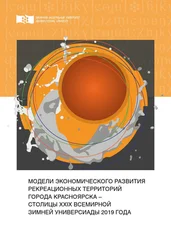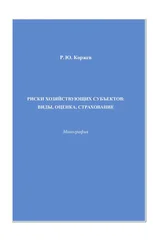Perrot, Jean (1998). Birth of a City: Susa // Capital city: urban planning and spiritual dimensions. Jerusalem: Bible Lands Museum.
Pinto, Christian (2007). Riddles in Stone: The Secret Architecture of Washington D.C. (USA, 2007).
Potts, Deborah (1985). Capital Relocation in Africa: The Case of Lilongwe in Malawi // Geographical Journal, vol. 151, no. 2, 182–196.
Proudfoot, Peter (1994). Secret Plan of Canberra: Masonic Architecture of Australia’s Capital. University of New South Wales Press.
Raafat, Hassan (2008). UAE to Get New Capital, The National, Apr 17 www. thenationalae/article/20090311/NATIONAL/786098729/1010
Radović, Srđan (2008). From Center to Periphery and Vice Versa: The Politics of Toponyms in the Transitional Capital // Bulletin of the Institute of Ethnography, 56 (2), pp. 53–74.
Rawat, Rajiv (2006). Capital City Relocation: Global-Local Perspectives in the Search for an Alternative Modernity // Annual Meeting of the Association of American Geographers. Chicago, Illinois, March 8.
Reichart, Thomas (1993). Städte ohne Wettbewerb. Bern: Haupt.
Remington, T. (2011). The Politics of Inequality in Russia. Cambridge: Cambridge University Press.
Remington, T. (2011). Russian Regional Inequality in Comparative Perspective, Paper prepared for Benjamin F. Shambaugh Conference // Lessons from Subnational Comparative Politics: Theory and Method in the Third Decade of Studying Russia’s Regions. University of Iowa October 6–9, 2011.
Richardson, H.W. (1981). National Urban Development Strategies in Developing Countries // Urban Studies, 18, pp. 267–283. Richardson, H.W. (2003). The Location and Relocation of National
and State Capitals in North America and the Rest of the World// The International Symposium on a Planning Policy for Korea’s New Capital City. Seoul: Korea Planners Association.
Ringrose, David (1998). Capital Cities, Urbanization and Modernization in Early Modern Europe // Journal of Urban History, vol. 24 (2), January, pp. 155–183.
Ringrose, David (1983). Madrid and Spanish Economy. 1560–1850. University of California Press, Berkeley.
Röber, Manfred & Schröter, Eckhard (2004). Governing the Capital – Comparing Institutional Reform in Berlin, London, and Paris, Working Paper PRI-8.
Robertson, James (2001). Stuart London and the Idea of a Royal Capital City // Renaissance Studies, vol 15, № 1, pp. 37–58.
Rokkan, Stein (1999). State Formation, Nation-Building, and Mass Politics in Europe / Ed. by Peter Florida.Oxford: Oxford University Press.
Rokkan, Stein (1973). Building State and Nation/Ed. by Stein Rokkan and Shmuel Eisenstadt. Sage, 1973.
Rokkan, Stein (1976). Dimensions of State Formation and Nation Building: A Possible Paradigm for Research on Variations Within Europe // Charles Tilly (ed.). The Formation of National States in Europe. Princeton: Princeton University Press.
Rokkan, Stein (1980). Territories, Centers and Peripheries: Toward a Geoethnic, Geoeconomic, Geopolitical Model of Differentiation Within Western Europe // Jean Gottman (ed.). Centre and Periphery. Spatial Variations in Politics. Sage: Beverly Hills.
Rowland, Daniel (1996). Moscow – The Third Rome or New Israel // Russian Review, vol. 55, no. 4, pp. 591–614.
Ruble, Blair (1990). Leningrad. Shaping a Soviet City. Berkeley: University of California Press.
Sakyi, Kwesi Atta (2011). Does Ghana need a new capital city? GhanaWeb, Oct 21.
Sassen, Saskia (2011). Cities in a world economy. Thousand Oaks, Calif.: Pine Forge Press, 2011, updated 4th ed.
Shatkin, Gavin (2005–2006). Colonial Capital, Modernist Capital, Global Capital: The Changing Political Symbolism of Urban Space in Metro Manila, The Philippines//Pacific Affairs, vol.78, no. 4.
Siegenthaler, Peter (1999). Japanese Domestic Tourism and the Search for National Identity // The CUHK Journal for Humanities, no. 3, pp. 178–195.
Schatz, Edward (2003). What Capital Cities Say About State and Nation Building // Nationalism and Ethnic Politics, 9 (4), pp. 111–140. Schlögel, Karl (1988). Jenseits des Grossen Oktober, Das Laboratorium der Moderne, Petersburg 1909–1921. Berlin: Siedler. Sellers, Jeffrey (2005). Re-Placing the Nation, An Agenda for Comparative Urban Politics//Urban Affairs Review, vol.40, pp. 419–445. Shevryev, A. (2003). The Axis Petersburg – Moscow: Outward and Inward Russian Capitals // Journal of Urban History, 30 (1), pp. 70–84. Shrestha, Hari (2011). Nepal Needs New Capital City: With Reference to Some Capital Cities Transfer//American Chronicle, October 1. Simsir, Bilal (2007). Ankara: The Republic’s Capital – to be or not to be! // The Guide Ankara Magazine, 192078 Slack, Enid & Chattopadhyay, Rupak (2009). Finance and Governance of Capital Cities in Federal Systems. Montreal: McGill-Queen’s University Press. Smith, Anthony D. (1995). Nations and Nationalism in a Global Era. Cambridge: Polity Press. Stratfor (2000). A Shift in Asia as Mongolia Stirs//Global Intelligence Update, May 19. Tarling, Nicholas (ed.) (1999). Cambridge History of South-East Asia. Cambridge: Cambridge University Press. The Telegraph (2011). Afghanistan: New Kabul to be built north of war torn capital, Apr 1. Therborn, Göran & Bekker, Simon (eds.) (2011). African Capital Cities. Power and powerlessness. Cape Town and Dakar: HSRC Press.
Theborn, Göran & Ho, Kong Chong (eds.) (2009). Capital Cities and their contested roles in the life of nations // City, vol. 13 (1).
Therborn, Göran (2008). Identity and Capital Cities: European Nation and European Union//The Search for a European Identity: Values, Policies and Legitimacy of the European Union / ed. by Furio Cerutti & Sonia Lucarelli. NY: Routledge.
Therborn, Göran. (2002). Monumental Europe. The National Years. On the Iconography of European Capital Cities//Housing Theory and Society, no. 1.
Therborn, Göran (2006). Eastern Drama. Capitals of Eastern Europe, 1830s–2006: An Introductory Overview // International Review of Sociology – Revue.
Internationale de Sociologie, 16 (2), pp. 209–242. Tilly, Charles (1992). Violence, Capital and European States. 990–1992. Cambridge: Cambridge University Press. Tocqueville, Alexis de (1856). The Old Regime and the Revolution. NY: Harper & Brothers. Toynbee, Arnold (1970). Capital Cities: Their Distinctive Features and Capital Cities: Melting-Pots and Powder-Kegs // Cities on the Move. pp. 67–78, 143–152. NY and London: Oxford University Press. Toynbee, Arnold (1987). A Study of History. Abridgement of Volumes vII–X by D.C.Somervell. NY and Oxford: Oxford University Press. Tyrwhitt, J. & Gottmann, Jean (eds.) (1983). Capital Cities // Ekistics, 50, March/Aprial. Oslo, Warsaw, Rome, Tokyo, and Washington, D.C. Turchin, Peter (2009). A Theory for Formation of Large Empires//Journal of Global History, vol. 4, issue 2 (July), pp. 191–217. http:// www.eeb.uconn.edu/people/turchin/PDF/JGH-A-Turchin5.pdf Turner, Sidney & Turner, Richard (2011). Capital Cities: a Special Case in
Urban Development, Annals of Regional Science, 46, pp. 19–35. UNESCO World Heritage Sites List. 2012. Capital Cities and Tombs of the Ancient Koguryo Kingdom, http://whc.unesco.org/en/ list/1135 Vale, Lawrence (1992). Architecture, Power, and National Identity. Yale: Yale University Press. Van Damme, Stéphane (2005). Paris, capitale philosophique de la Fronde à la Révolution. Paris: Odile Jacob. Van Damme, Stéphane (2007). How to produce local knowledge in an European Capital? The territorialization of Science in Paris from Descartes to Rousseau // Les Dossiers du Grihl.
http://dossiersgrihl.revues.org/792 Vedder, Richard (1996). Capital Crimes, Political Centers and Parasite Economies // Cato Policy Analysis, no. 250, Feb. Vogel, Ronald K. (2001). Decentralization and Urban Governance: Reforming Tokyo Metropolitan Government//Blair A.Ruble, Richard E.Stren,Joseph S.Tulchin (eds.). Urban Governance Around the World. Washington, DC: Woodrow Wilson International Center for Scholars, pp. 114–148. Vries, Jan de (1984). European Urbanization, 1500–1800. London: Methuen. Vries, Jan de (2002). Great Expectations: Early Modern History and the Social Sciences // Testing the Limits of Braudel’s Meditteranean / Ed. by John Marino. Truman State University Press. Yoon, Hong-Key (2006). The Culture of Fengshui in Korea: An Exploration of East Asian Geomancy. Lanham: Lexington Books, 332 p. Xu Shanji and Xu Shanshu (1969). Dili-Renzixuzhi (地理人子知). Hsinchu: Chulin Shu-chu. Yahye, Mahamud (2005). Move the Capital from Mogadishu? Wardheernews.com, May 30. Wagenaar, Michiel (2001). The Capital as a Representation of a Nation // Gertjan Dijkink and Hans Knippenberg (eds.). The Territorial Factor: Political Geography in a Globalizing World. Amsterdam: Vossiuspers. Wagenaar Michiel (2000). Townscapes of Power // GeoJournal, 51, pp. 1–2. Weber, Max (1978). Economy and society: An outline of interpretive sociology. Berkeley: California University Press. Originally published in 1925. Wellhofer, E. S. (1989). Core and Periphery: Territorial Dimensions in Politics // Urban Studies 26, 340–355. Westenholz, Joan G. (ed.) (1996). Royal Cities of the Biblical World. Jerusalem: Muzeon artsot ha-Miḳra.
Читать дальше
Конец ознакомительного отрывка
Купить книгу

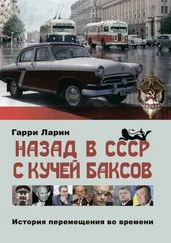
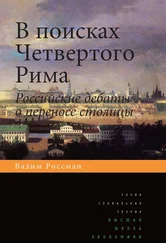
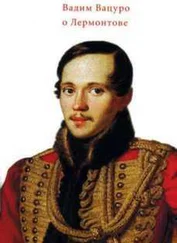
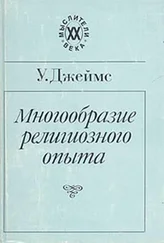
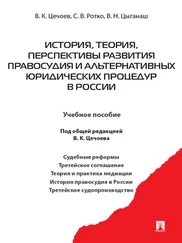
![Уилл Дюрант - Уроки истории [Закономерности развития цивилизации за 5000 лет]](/books/404194/uill-dyurant-uroki-istorii-zakonomernosti-razvitiya-thumb.webp)




